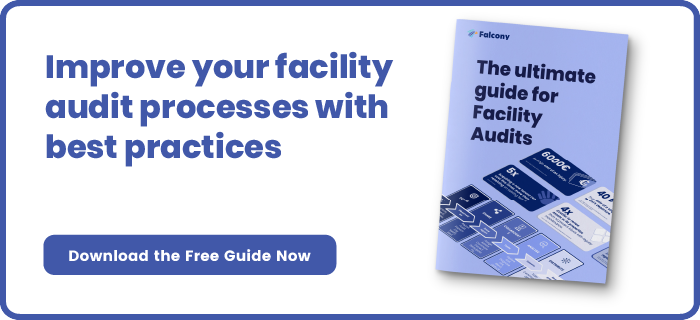Many decision-makers are facing a challenge of moving from paper-based systems to digital...
The Objective Way To Assess Quality In Shopping Centres
Shopping centre quality is not something that might make big news headlines. However, it is something that affects most people regularly.
Customers rely on shopping centres for their day-to-day shopping needs. They have expectations about the kind of experience they ought to receive and the quality it should be.
Thus, property managers and shopping centre owners need to prioritise quality management and quality assessments.
5 Key Steps To Conduct Objective Quality Assessments In Shopping Centres
From our previous blog post, we know why it’s important to conduct shopping centre quality assessments. But, what are the best techniques for conducting an objective quality assessment for your shopping centre? Here are 5 steps to consider.
1. Establish a quality management channel
Maintaining high-quality facilities is ongoing work that deserves a dedicated system or channel. By establishing one, you can gather up to date information from your workers. This enables you to ensure more consistent and timely maintenance and issue resolution.
Your employees have day-to-day insights that you, as facility management, might not. By setting up an accessible channel for them to report problems, you can get objective insight from your staff. As a result, you can improve quality where it might be lacking.
2. Collect customer feedback
Similar to the importance of employee involvement, there is great value in knowing what your customers think about the quality of your shopping centre.
Set up customer feedback channels to identify any recurring issues and complaints from centre visitors. After all, shopping centres are for shoppers. So, what better feedback can you ask for than from the audience your building serves?
3. Create a quality checklist for inspectors
Having customer and employee quality insight channels is very useful. However, you still need to regularly conduct "traditional" quality assessments.
To make sure that inspectors carry out objective quality assessments, you should create a standard quality checklist for your facility examinations.
Using a predetermined checklist reduces the opportunity for assessor bias. It ensures you receive accurate data and information from the process.
4. Use automated reporting and data collection
The results received from the above quality assessment methods can be overwhelming. You might not have the human resources necessary to create a team dedicated to manually collecting data from each assessment.
This is where automation comes in. Automated reporting and data gathering is much more efficient. In addition, it minimises the human error and subjectivity involved in data capturing.
5. Utilise an accessible mobile channel
Benefit from features like automation by using a mobile quality management platform for your quality assessments.
A digital platform helps track information and makes sure no assessments are altered without approval. Thus, it helps keep your results objective. It also supports you in implementing the quality assessment techniques above seamlessly!
Final Thoughts
When it comes to quality assessments, the more perspectives and insights you have, the more objective and useful your data becomes.
With a range of information on the areas of improvement, you can work on making your shopping centre the best it can be!
Are you looking for a tool to enable, record and monitor quality assessments and other processes in your organisation? Falcony | Audit ticks all the boxes for reporting, analytics and follow-up actions. Is easy to customise, enables real dialogue and is a lot more.
We are building the world's first operational involvement platform. Our mission is to make the process of finding, sharing, fixing and learning from issues and observations as easy as thinking about them and as rewarding as being remembered for them.
By doing this, we are making work more meaningful for all parties involved.
More information at falcony.io.

Related posts
Defensive Decision-Making: Why It Happens
Defensive decision-making or decision holding is when a manager (or any decision-maker) ranks one...
Customer Experience Is Not Just One Department
Customers are the centre of any business. If your business is going to thrive, then it needs to...





